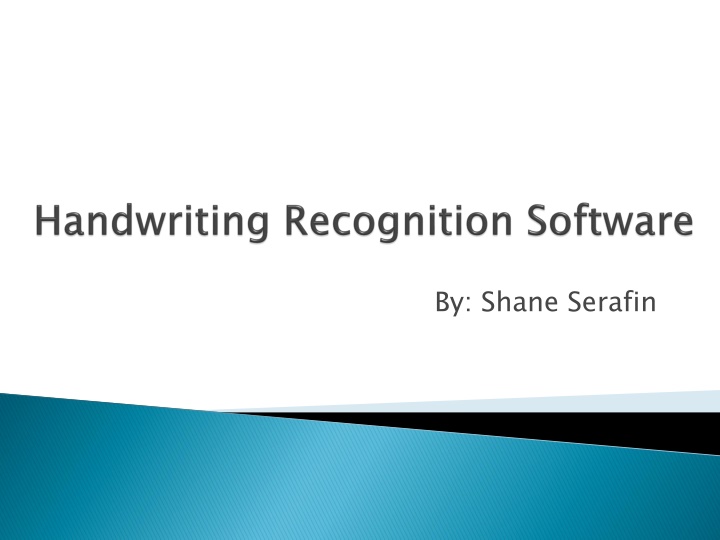
Handwriting Recognition: History, Types, and Uses
Explore the history, types, and uses of handwriting recognition, from offline to online recognition systems. Learn about character extraction algorithms, advantages, disadvantages, and the evolution of this technology since the 1980s.
Download Presentation

Please find below an Image/Link to download the presentation.
The content on the website is provided AS IS for your information and personal use only. It may not be sold, licensed, or shared on other websites without obtaining consent from the author. If you encounter any issues during the download, it is possible that the publisher has removed the file from their server.
You are allowed to download the files provided on this website for personal or commercial use, subject to the condition that they are used lawfully. All files are the property of their respective owners.
The content on the website is provided AS IS for your information and personal use only. It may not be sold, licensed, or shared on other websites without obtaining consent from the author.
E N D
Presentation Transcript
What is handwriting recognition History Different types Uses Advantages Disadvantages Conclusion Questions Sources
Definition: The ability of a computer to receive and interpret handwritten input from sources such as paper documents, photographs, touch-screens, and other devices and turning it into a digitized form.
1980s: Start of retail handwriting recognition system with electronic pen and electronic tablet 1989: Portable handwriting recognition computer: GRiDPad from GRiD Systems. 1997: First handwritten address interpretation system (HWAI) deployed by United States Postal Service 2007: First automatic writer recognition system: CEDAR-FOX
Off-line Recognition Looks at image form of handwritten strokes Not real time Conversion image to letter coded text Static form Uses Optical Character Recognition or Intelligent Word Recognition Earlier form of handwriting recognition More difficult to decipher
Character extraction by using an algorithm to look at: Aspect ratio Percent of pixels above the horizontal half way point Percent of pixels above the vertical half way point Number of strokes Reflected by Y axis Reflected by X axis Distance away from center
On-line Recognition Real time transfer Handwriting is direct input from a device Sensor picks up pen movements Dynamic form
Need a pen and touch sensitive surface Software application looks at stroke order and directions of input Converted into digital text Uses fuzzy logic or neural network techniques
Postal-Address Interpretation File:Address Recognition.png
Form of writing Tablets, Cell phones, Computers, Smart Boards
CalliGrapher: Microsoft Windows Mobile Pocket-PC 2003/2003SE/2005 devices running Windows Mobile 6.0 and older Graffiti: Android versions 1.6, 2.0, 2.1 CellWriter: Window System running on Linux MyScript: PC and mobile devices
Electronic data storage More organized files Easier data retrieval Historical preservation Can be easier form of writing Verification methods
Not always accurate Unique style of writing Spacing of letters or words Poor images of text Different languages Modern handwriting compared to historical
What handwriting recognition is The different types Importance of it
http://science.howstuffworks.com/biometrics1.htm http://www.ehow.com/about_6552517_definition-handwriting- recognition.html http://www.ehow.com/info_8085619_software-handwriting- recognition.html http://www.ehow.com/info_8658117_challenges-handwriting- recognition.html http://www.cse.yorku.ca/course_archive/2004- 05/F/4441/HandwritingRecognition.pdf http://en.wikipedia.org/wiki/Handwriting_recognition
